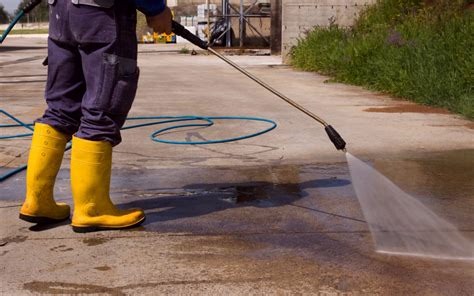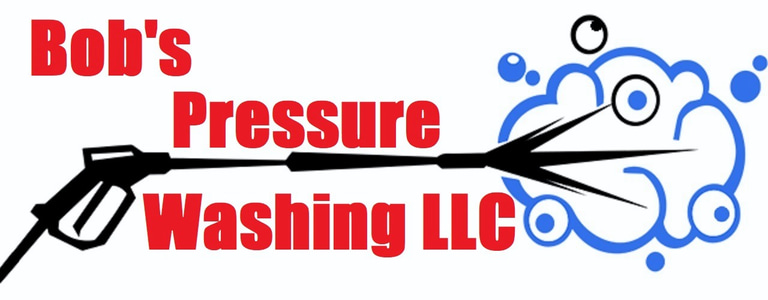Understanding the Economic and Environmental Considerations of Pressure Washing
Understanding the Economic and Environmental Considerations of Pressure Washing
EXTERIOR CLEANING SERVICE PROCESSESBASIC HOME MAINTENANCECURB APPEALPRESSURE WASHING SERVICES


Introduction to Pressure Washing
Pressure washing, also known as power washing, is a method that uses high-pressure water spray to remove dirt, grime, mold, mildew, and other contaminants from surfaces such as buildings, vehicles, and concrete surfaces. Employing highly pressurized water allows for effective and efficient cleaning, which is often more thorough than traditional cleaning methods. This technique is crucial for maintaining the cleanliness and longevity of various surfaces, ensuring they remain not only aesthetically pleasing but also structurally sound. Over time, the accumulation of debris can cause surfaces to degrade, potentially leading to costly repairs. Regular pressure washing helps to mitigate such risks, extending the lifespan of the property.
The decision between hiring professional pressure washing services and undertaking a DIY approach is an important one. Professional services typically offer the benefit of expertise and access to industrial-grade equipment, which can be more effective in tackling tough stains and larger areas. On the other hand, a DIY approach might be appealing due to potentially lower costs and the convenience of handling the task on one's own schedule. With various consumer-grade pressure washers available on the market, individuals can find suitable equipment for personal use. However, it's essential to consider the specific requirements of the surface being cleaned, as improper use can lead to damage.
This blog will delve deeper into the economic considerations, comparing the costs associated with professional services versus DIY methods. Furthermore, we'll explore the environmental impacts of pressure washing, examining both its benefits and potential drawbacks. By understanding these facets, property owners can make more informed choices regarding their cleaning practices, balancing financial concerns and environmental responsibility. This comprehensive approach ensures optimal results, benefiting both the individual and the broader community.
When hiring a professional pressure washing service, several factors can influence the overall cost. One primary consideration is the size of the area to be cleaned. Larger areas naturally require more time and resources, leading to higher costs. Additionally, the condition of the surface plays a significant role. Heavily soiled or stained areas may require more intensive cleaning methods, driving up labor and material costs.
The complexity of the job also impacts the pricing. Simple, flat surfaces like driveways or sidewalks are generally less expensive to clean compared to intricate areas such as buildings with multiple stories or structures with a lot of nooks and crannies. Similarly, surfaces that are hard to reach or require special access equipment can add to the overall expense.
Regional price variations are another critical factor. The cost of living and the going rate for professional services can significantly differ from one place to another. Urban areas with a high demand for specialized services often have higher rates compared to rural locations. Consequently, where you live can significantly impact the cost of a pressure washing service.
Additional services such as sealing or mold removal can further affect pricing. Some surfaces may benefit from sealing post-cleaning, which offers long-term protection and can make future cleanings more manageable. Mold or mildew removal is another service that might be necessary, particularly in damp climates, adding to the overall cost but ensuring a thorough and effective cleaning.
The expertise of the professionals and their specialized equipment are value-added aspects worth considering. Experienced professionals can identify the best techniques for various surfaces, ensuring effective and damage-free cleaning. They also have access to commercial-grade equipment, which is more powerful and efficient than typical consumer models. This not only improves the quality of the clean but can also decrease the time required, providing better overall value for the cost.
When considering DIY pressure washing, it is crucial to evaluate the various components that contribute to the overall cost. Firstly, the purchase or rental of a pressure washer is a significant expense. Purchasing a pressure washer can range from $100 for a basic model to over $1,000 for a high-end commercial-grade machine. Renting might seem more economical, with daily rates typically between $40 to $100, but if the project extends over multiple days, costs can accumulate rapidly.
Additionally, cleaning detergents are another cost factor. The price of specialized pressure washing detergents varies depending on the type and quantity needed, with prices ranging from $10 to $50 per gallon. It is important to select the right detergent for the surface being cleaned to avoid potential damage and achieve optimal results. Using the wrong detergent can lead to inadequate cleaning or surface degradation, potentially incurring repair costs.
Speaking of potential repairs, improper use of pressure washers can cause significant surface damage. Replacing or repairing damaged surfaces such as siding, wood, concrete, or windows can be costly. For example, repairing damaged siding might cost anywhere from $500 to several thousand dollars, depending on the extent of the damage.
Furthermore, the value of one’s time should be factored into DIY pressure washing costs. The time required to set up, perform the task, and clean up afterward can be extensive, potentially taking several hours or even days, depending on the size and complexity of the job. For individuals with a busy schedule, this time commitment can translate into a substantial opportunity cost.
When comparing DIY costs to those of professional pressure washing services, it is evident that professionals offer competitive pricing that includes equipment, cleaning solutions, expertise, and labor. Professional services typically range from $200 to $500, depending on the job size. This balanced view highlights that while DIY pressure washing may offer a sense of accomplishment, it is essential to weigh the financial and time-related costs against the potentially streamlined and risk-free professional services.
Understanding the Environmental Impact of Pressure Washing
Pressure washing, while an effective method for cleaning surfaces, carries significant environmental implications. One of the primary concerns is the extensive water usage required for effective operation. High-pressure washers can utilize large amounts of water in a short period, which, if not managed responsibly, leads to substantial water wastage. This excessive consumption can deplete local water resources, particularly in areas experiencing drought or with limited water supply.
In addition to water usage, the chemical runoff resulting from pressure washing poses a serious environmental threat. When detergents, solvents, and other cleaning agents are used, they can introduce harmful substances to the surrounding environment. If these chemicals are not properly contained or filtered, they can seep into local water bodies such as rivers, lakes, and groundwater systems. This untreated runoff can harm aquatic life, disrupt ecosystems, and contaminate drinking water supplies.
Improper use of pressure washing not only leads to environmental damage but also violates regulatory standards aimed at protecting water quality. Many regions have established guidelines to mitigate the negative impact of runoff, mandating the use of eco-friendly detergents and runoff containment systems. Failure to adhere to these guidelines can result in legal consequences and contribute to long-term environmental degradation.
Being environmentally responsible when employing pressure washing techniques is crucial. Opting for ecologically safe cleaning solutions and implementing water recycling systems can significantly reduce the environmental footprint of pressure washing activities. Additionally, proper training and awareness of best practices for water use and chemical management can further minimize the adverse effects on local ecosystems.
Ultimately, a conscientious approach to pressure washing not only supports environmental sustainability but also ensures compliance with regulations, protecting both natural water resources and the broader ecological balance.
Strategies to Minimize Water Waste During Pressure Washing
Minimizing water waste during pressure washing is crucial for both economic and environmental benefits. Adopting a few practical strategies can significantly reduce water consumption while maintaining effective cleaning results. One of the most efficient ways to conserve water is by using the proper nozzle settings. Opting for a high-pressure, low-flow nozzle ensures that the cleaning task is accomplished with minimal water usage. Adjusting the nozzle settings according to the surface material and the level of grime can also enhance efficiency and conservation.
Efficient scheduling of cleaning activities can further contribute to water savings. By planning pressure washing tasks during cooler parts of the day or during seasonal changes when dirt and mold are less likely to accumulate quickly, you can reduce the frequency of cleanings and, consequently, the amount of water used. Moreover, scheduling regular maintenance cleanings can prevent the build-up of stubborn dirt, requiring less intense and shorter cleaning sessions.
Another effective strategy is to reuse water where possible. Implementing water recycling systems can capture and filter the water used during the cleaning process, allowing it to be reused multiple times. This not only conserves water but also reduces operational costs. In addition, eco-friendly detergents designed for pressure washing dissolve efficiently and require less water for rinsing, making them an excellent choice for environmentally conscious practices.
Technological advancements have made significant strides in minimizing water waste. Modern water recovery systems are equipped with advanced filtration units capable of purifying and recirculating water. These systems are particularly beneficial for large-scale cleaning projects where water consumption can be substantially high. Investing in such technologies can provide long-term savings and support sustainable cleaning practices.
By integrating these strategies, pressure washing can become more sustainable, ensuring effective cleaning while conserving valuable water resources. Emphasizing proper nozzle settings, efficient scheduling, water reuse, and utilizing advanced technologies are key steps toward reducing water waste in pressure washing. By adopting these measures, both economic and environmental goals can be harmoniously achieved.
Conclusion and Final Tips
In summary, pressure washing presents both economic and environmental considerations that cannot be overlooked. On the economic side, while the initial cost of professional pressure washing services may seem high, they often yield better results and longevity than DIY efforts, ultimately offering a cost-effective solution. In contrast, the DIY route demands a significant investment of both time and money in acquiring the necessary equipment and mastering its use.
Environmentally, pressure washing has the potential to be both beneficial and harmful. Proper methods can prevent the buildup of harmful substances on surfaces, reducing the frequency of his use and conserving resources. Conversely, improper techniques or the use of harsh chemicals can lead to environmental damage, polluting water sources and harming local ecosystems.
For those torn between professional and DIY options, the decision hinges on multiple factors. Evaluate the size and specific needs of the project, your budget, and your willingness to invest time and effort into learning and executing the task effectively. It's essential to weigh the immediate costs against the long-term benefits unique to each approach.
Regardless of the method you choose, integrating environmentally conscious practices into your pressure washing routine is paramount. Opt for biodegradable detergents, use the least amount of water necessary, and always direct run-off towards areas where it can be safely absorbed. This not only protects our planet but also ensures compliance with local regulations.
Ultimately, recognizing the interconnectedness of economic and environmental impacts will enable you to make a well-informed decision. With conscientious practice, the benefits of pressure washing extend beyond mere cleanliness, contributing to a more sustainable and cost-efficient future.
